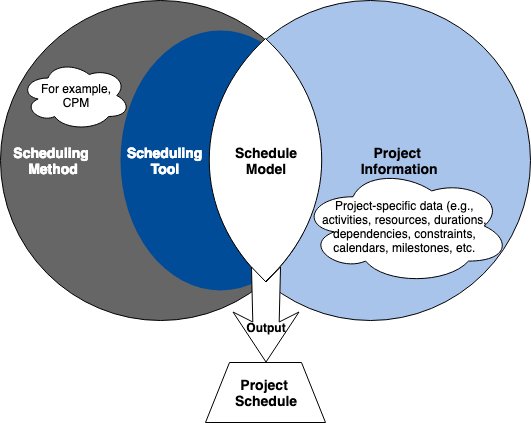Milestones in Project Planning
Contents |
Abstract
A good and balanced project plan is a crucial success factor for a project, as insufficient resource planning and unrealistic schedules count for 30 % of the reason when looking at why projects fail [1]. There is a wide range of different approaches and tools used for project planning. This article clarifies milestone planning and how to use it in project management.
According to Managing Successful projects with PRINCE2 is a milestone defined as "an event on a schedule which marks the completion of key activities" [2]. Milestones are a tool used in project management to mark the completion of a major phase in a project. Milestone planning is results-oriented and a milestone should present what is supposed to be achieved at a given time in the project. Milestones may influence the way activities in a project are sequenced. Milestones are targets in the project phase, it does not have a duration, but they need to be completed at before a given date. A milestone list for a project is used to estimate activities duration as well as develop the project schedule [3].
This article will contain two main parts, one with a focus on how to set milestones and a second with a focus on how to implement milestones in the project schedule. The first part of this article will also contain an introduction to project planning and milestones in general. While the second part will contain an example of a milestone chart and how to incorporate it in the project schedule displayed in a Gantt chart.
Introduction
A project schedule is used to obtain a clear overview who and when the project will deliver the products, services or results. According to Project Management: A guide to the Project Management Body of Knowledge (PMBOK guide) Project schedule management consists of six processes [3]:
- Plan Schedule Management
- Define Activities
- Sequence Activities
- Estimate Activities Durations
- Develop Schedule
- Control Schedule
Depending on the size of the project will some of these processes be linked tightly.
There are different scheduling methods, it is the project management team job to determine which method to use, the two most common are critical path or an agile approach. When the project management team has conducted the project-specific data into the six processes, it is possible to create the project schedule by entering the data into a scheduling tool. This is illustrated in figure 1. When a project schedule has been created it should be presented graphically. Often this is done by an Activity list, a Bar/Gantt Chart or a Network Diagram.

Annotated bibliography
A Guide to the Project Management Body of Knowledge (PMBOK® Guide), Project Management Institute, 6th Edition - 2017 | Chapter 6
Annotation: The reference is a Standard by Project Management Institute (PMI). Its focus in chapter 6 is Project Schedule Management and tools to manage project schedules. This reference describes which inputs and outputs is needed to develop a project schedule.
Andersen, E. S. (1996). Warning: activity planning is hazardous to your project's health! International Journal of Project Management, 14(2), 89-94.
Annotation: This paper argues against the planning method Network and Activity Planning. The paper focuses on a result-orientated way of planning a project, where milestones are used as results there should be achieved during a project. The writer argues that a project manager does not have the necessary information at the beginning of the project to do activity planning, this often leads to miserable results. While milestone planning makes it possible to wait until til milestone is starting before activities are chosen. This reference does not referee to other references that back up the opinion that activity planning is hazardous to projects. Why the reference not can stand alone.
References
- ↑ The Standish Group International, Inc. (2015). CHAOS REPORT 2015. [online] Available at: https://www.standishgroup.com/sample_research_files/CHAOSReport2015-Final.pdf [Accessed 1 Mar. 2019].
- ↑ The Standard for Project Management, Managing Successful Projects with PRINCE2, The Stationery Office Ltd, 6th Edition - 2017 | Chapter 9
- ↑ 3.0 3.1 3.2 A Guide to the Project Management Body of Knowledge (PMBOK® Guide), Project Management Institute, 6th Edition - 2017 | Chapter 6